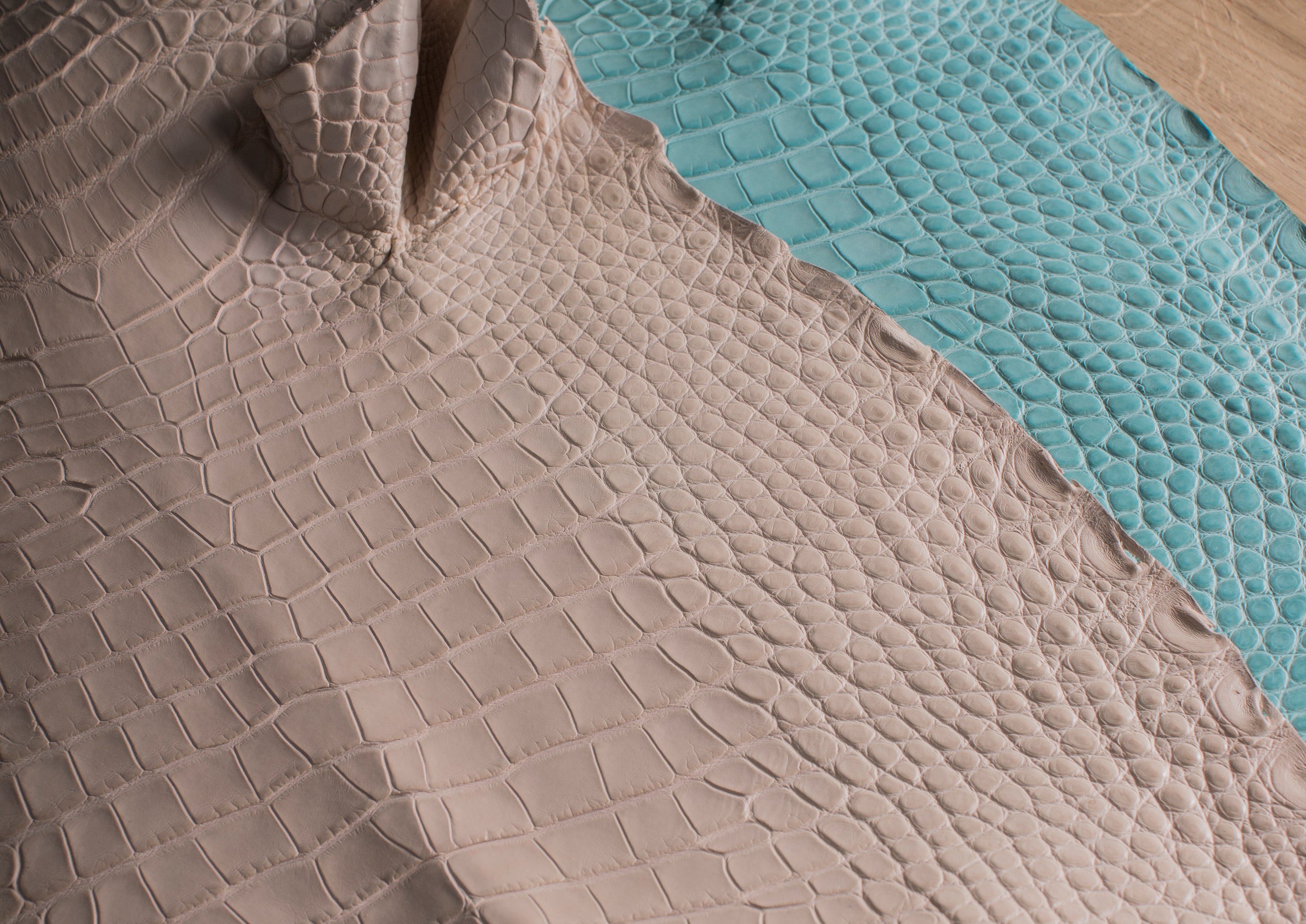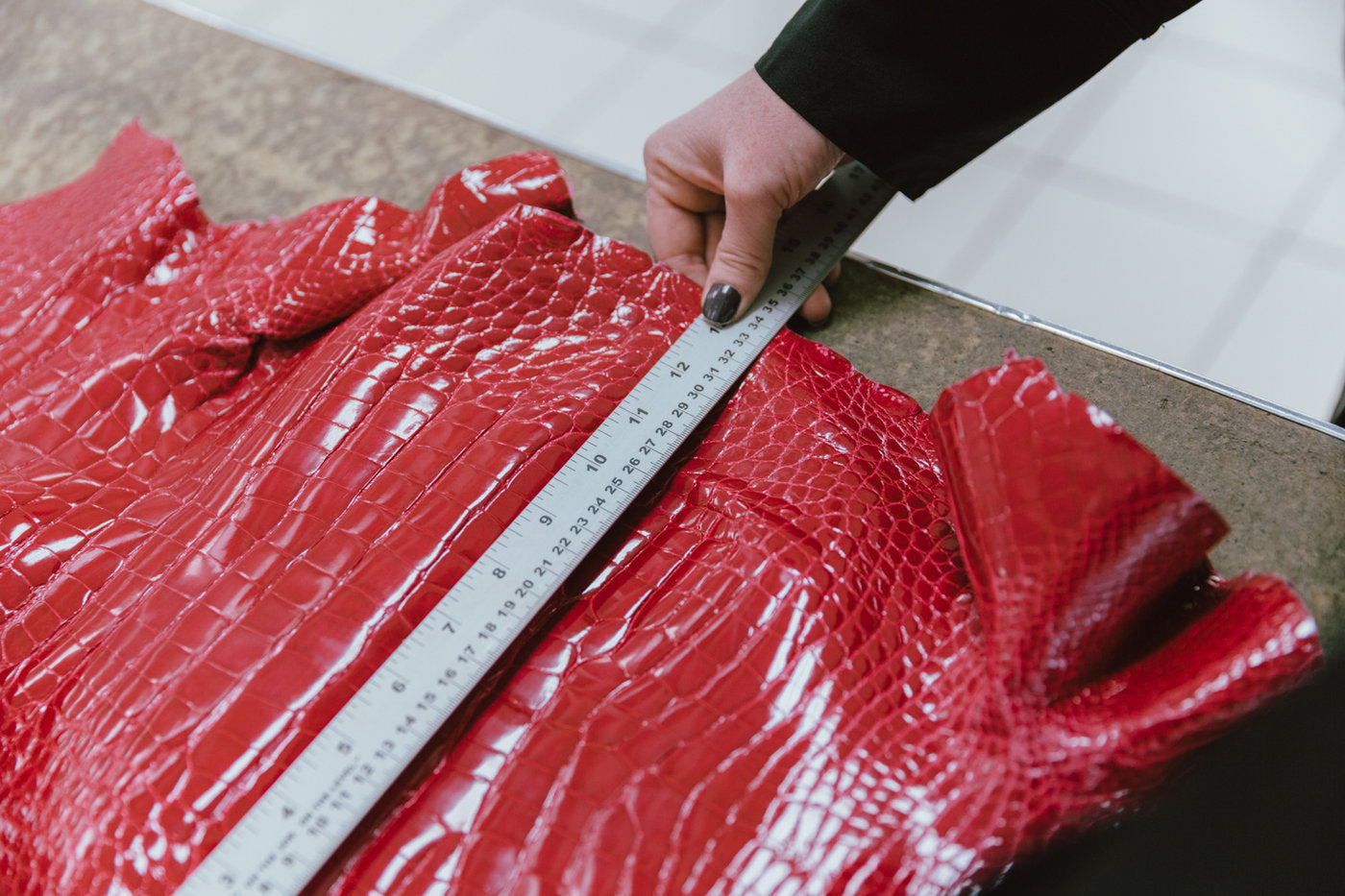
Grading & Measuring
Quality Isn't Expensive. It's Priceless
Alligator and crocodile skin prices fluctuate according to market demand, supply availability, and currency exchange rates. Price is based on 2 factors: grade and size. The better the grade and higher the size, the more expensive the skin.
American Tanning and Leather LLC supplies luxury brands, small craftsmen, and individual buyers with the finest skins available at the very best value.
The grade or selection of the skin is determined primarily by the quantity and location of natural defects in the skin. Our leather is the same, luxuriously tanned quality from a Grade 1 to Grade 5. We never cut corners on making leather.

Grading & Measuring
How are alligator and crocodile measured?
Alligators are measured by the centimeter, with the measurement calculated by placing a ruler east/west across the belly. The skin must be flat, and the measurement is taken from edge to edge, not including the outermost half bone, with partial centimeters being rounded down.
(Ex: A skin measuring 48.75 cm will be measured as 48 cm).

Grading & Measuring
How are skins graded?
Thank you for your interest in our grading process. Please note that grading standards may vary among leather goods makers. Some skins graded as 1/2 may be unsuitable for certain applications, while others graded 2/3 might work perfectly. Grading is based on the number of defects in a skin, not the type of defects.
To help you make the best decision, we photograph each individual skin so you, the maker, can assess whether it meets your specific needs. However, skins listed in "groups" are closeout items. To keep costs low, we do not photograph these individually, allowing us to offer them at the best possible price.
Our grading applies only to the belly section of the skin. Due to the territorial nature of alligators and crocodiles, we do not grade the head or tail, as these areas are most prone to bite marks and scars.
Grading System (Belly Only):
- Grade 1 – Clean belly
- Grade 1/2 – One out of four quadrants has a defect
- Grade 2/3 – Two out of four quadrants have defects
- Grade 3/4 – Three out of four quadrants have defects
- Grade 4/5 – All four quadrants have defects
General Uses by Grade:
- Grade 1 & 1/2 – Handbags, garments, high-end leather goods, watch straps
- Grade 1/2 & 2/3 – Boots, footwear, mid-tier leather goods
- Grade 2/3 & 3/4 – Belts, lower-end leather goods
- Grade 4/5 – Small pieces, trim (considered reject skins but may still be usable depending on the photos)
When purchasing, please review the provided photos carefully to determine if a skin meets your needs.
Types of Skin Defects
-

Healed Scars
Healed scars are old battle wounds and bite marks. Healed scars have closed grain, and may be acceptable in the cutting area, depending on the project.
-

Open Scars/ Cuts
Open scars and cuts are wounds that were fresh and unhealed on the skin. These types of defects have open grain, and typically cannot be included in the cutting area.
-

Holes
Holes usually occur from scars or cuts that opened up during the tanning process due to the mechanical action of the drum rotation. Holes may also be a result of poor skinning technique.
-

Parasites
Parasite damage appears as tiny round "bored" holes. They are a result of leeches and are only found on wild alligators. Parasite damage may be healed or open.
-

Wide Umbilical Scars
Wide umbilical scars are more prevalent in farm raised alligators and rarely occur on wild alligators. The cause of wide umbilical scars has been debated with causes ranging from egg handling to early hatching.
-

Wrinkling
Wrinkling may occur in both farmed and wild alligators. Wrinkles can be a result from raw skin issues such as rapid weight loss of a sick wild alligator or improper diet. Wrinkles can also be caused from tanning issues.
-

Grain Damage
Grain damage may be caused from improper raw skin preservation and care. It may also occur from poor tanning techniques which result in overheating (and burning) of the skin during the tanning process.
-

Bones/ Buttons
Bones or "buttons" are osteoderms which form in the skin. Bones are usually found in the neck and upper belly region in larger wild alligators and are rarely found in small or farmed animals.








